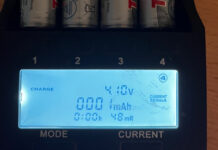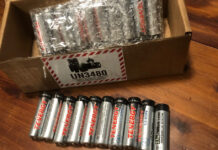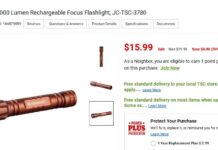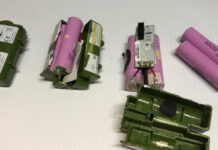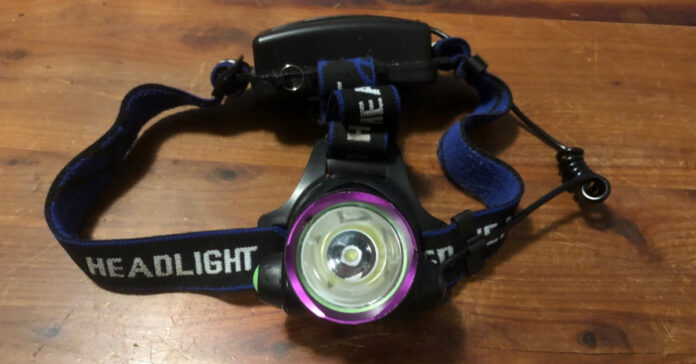
I love flashlights. Decades ago, that meant a nice multi-cell Maglite. Today I carry a small tactical flashlight every day and I wear a headlamp a couple times a night while walking the dog. I also have a flashlight in my vehicle survival kit and another in my EDC bag. There are spare batteries in my EDC bag and have a charger in my car. I have at least four weapons-mounted lights, and I have spare flashlights in a faraday cage.
I standardized on tactical flashlights designed to use rechargeable lithium 18650 batteries. Most will also run on two CR123s, and I stockpile both. I also have lanterns and other devices that use 18650s, which I have written about before.
Flashlights and other battery powered light sources are going to be what separates us from the dark ages in a SHTF disaster in which the utilities go out and stay out for months of years. As great as flashlights are, I strongly recommend you buy and stockpile headlamps because they don’t take up a hand and the light goes where you look. This makes it easier to use a tool, cook something, or to perform other tasks.
Here’s what I look for in a headlamp:
Multiple Lighting Modes
A good, all-around headlamp has multiple brightness levels and possibly the option for a red light. The multiple brightness levels are important because rarely will the light you need to work in the kitchen or do other close-up work suffice if you go outdoors.
There is a place for a bright headlamp, and I use mine on the high setting when I walk the dog at night, but that brightness renders the light useless when you are trying to do something at arm’s length. If you are in a confined space, the bright light bounces off the walls and blinds you. Low lumen settings are what you need in these situations, and they also give you a longer run time.
Most headlamps have pre-configured settings. I find three levels are the most common: low, medium and high. Some will also have a turbo (very bright), firefly (very dim), or SOS. Occasionally, you will find a headlamp with a variable dial. Turn or slide it and the light brightens or darkens to the precise setting you want. I only have one of these, but more are on my want list.
Battery Types
Many inexpensive headlamps use three AAA batteries. I think the run time is too short on these. If you’re buying a AAA-powered headlamp for under $10 at a big box store, it will be great for a power outage of a few days, but don’t count on it for years of services. For long-term use, I prefer headlamps powered by rechargeable lithium 18650 batteries. In most cases, I buy high-end batteries to replace the cheap ones that come with the light.
Most lights use one battery but some take two. This should give you twice the run time.
The Headband Design
Lightweight headlamps have a single headband that goes around your head. Heavier lights have a third elastic piece that goes over the top of your head, from front to back. I prefer the latter design because it is less likely to slip off during strenuous activity. This is also my preferred setup for lamps that have the light in front and the battery pack in the back.
Some headlamps feature small angle flashlights that can pop in our out of a headband. This gives you the advantage of a headlamp that can convert to a hand-held or sat on its end. Some lights have magnets on them, so you can stick them to a metallic surface. While I don’t own an angle light, I have handled them. The concept seems good, but I would worry about the possibility that the light would pull or tear free.
Bulb Type and Lamp Head
It should go without saying that LEDs are mandatory because they are bright and efficient. I prefer a single LED but multiple LEDs in a light will give you redundancy should one LED give out. I also prefer flood lights as opposed to spot lights. Many lamp designs have a bright spot in the center and a wider beam around it. These work well.
Often, the cheapest headlamps don’t allow you to change the angle of the light from your headlamps. I prefer a mount that allows you to point your light up or down. (Of course, it must stay there when you do.) It is especially important to change the angle of your light beam if you are going up or down a hill or if it is foggy or rainy.
Expensive Versus Inexpensive
Here’s how I rank headlamps by price:
- Under $10 is cheap
- $10 t $25 is inexpensive
- $25 to $60 is moderately expensive
- More than $60 is expensive.
My wife and I each use a cheap headlamp indoors. I gave this one a mini review back in January. It may be cheap, but it doesn’t use AAAs, and it has multiple brightness levels.
The headlamp I use every night for walking the dog costs me less than $20. They usually last about a year. After they stop working, I throw them in a box in hopes I can one day piece together a working light. Then I reorder, often from Walmart.com. These are also the headlamps I keep in my car emergency kit. All told, I have four of this model on hand, one of which I wear regularly and one of which is a spare.
Finally, I have two expensive headlamps that I rarely use. I keep them tucked away in the Faraday cage for hardcore use during the SHTF. I’ll wear these and hand the inexpensive ones out to others. My hope is that they are robust enough that the lamp outlasts the elastic in their headband.
I have nothing against a cheap light; just keep a backup on hand. Cheap headlamps are also good to give to kids.
Recap
To recap, a preppers should have multiple headlamps that use rechargeable batteries and come with a comfortable headband that provides good retention. The best headlamps give you user-selected brightness levels and the beam can be directed up or down without moving the headband.
If you enjoyed this article, we recommend Why Every Prepper Should have a Headlamp (or Three)

